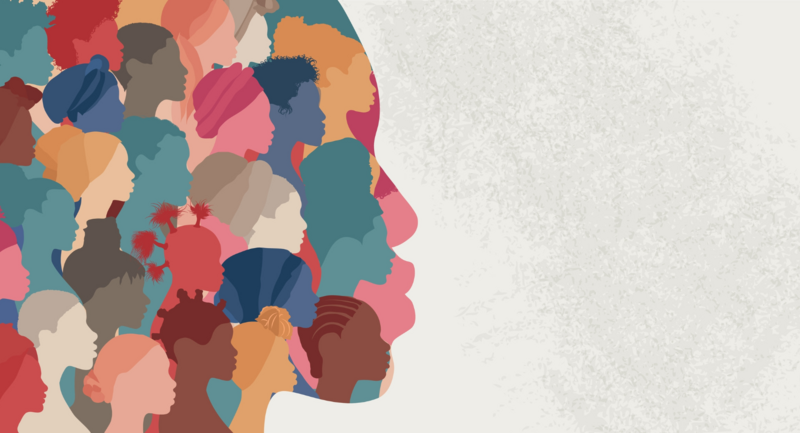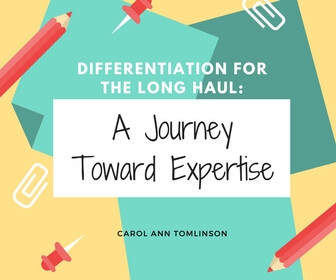History can teach us a lot about where we are as a society and how we got here. Some historical topics are uncomfortable to engage in: they can be both difficult to learn as well as painful to teach. One such topic is chattel enslavement.
A few years ago, the Southern Poverty Law Center published the report Teaching Hard History: American Slavery, detailing the tough time teachers have with teaching the topic of enslavement. According to the report:
“Schools are not adequately teaching the history of American slavery, educators are not sufficiently prepared to teach it, textbooks do not have enough material about it, and—as a result—students lack a basic knowledge of the important role it played in shaping the United States and the impact it continues to have on race relations in America.”
This inadequacy has real implications for the teaching of enslavement—in addition to the current war against Black Studies. A notable instance of this inadequacy is the decision not to acknowledge the moral wrongdoing of enslavement. For example, last year the Washington Post reported that a teacher left his teaching position after being told by his superintendent that saying, "Slavery was wrong" was a "stance," not a "fact," and he might not be able to say that in his class.
Let me tell you: Enslavement was wrong. And it cannot, and should not, be ignored in the curriculum or in our society.
The unpaid labor of African people, as well as the exploitation of resources from lands where the descendants of formerly enslaved Africans in the West (in combination with the stolen lands of the Indigenous), laid the foundation for the United States to become the wealthiest country in the world.
Additionally, the Africanisms found in the food, daily practices, folkways, music, and norms that traveled with African people across the Atlantic have contributed heavily to the cultural norms, traditions, and ways of being that Americans of every hue hold dear.
In short, enslavement is a major part of the history and heritage of the United States.
What is lost if we fail to teach young people of the connections between past and present inequities?
With that truth in mind, how should educators teach enslavement in a way that empowers them to humanize enslaved African peoples while speaking truth to the political, social, and economic ugliness of this peculiar institution—the remnants of which we continue to struggle with to this day? What is lost if we fail to teach young people of the connections between past and present inequities?
While it's natural for educators to feel discomfort approaching the horrors of enslavement, these topics must be shared and discussed. White educators often feel uncomfortable when they want to teach the topic and hesitate to fully engage with it. Also, some wrestle with white guilt or with the fear of inadvertently saying something racist. Discomfort for Black educators has less to do with what to teach and more with how to handle potential backlash from white parents. The current discourse about teaching Black history also has Black educators fearing repercussions.
The only way to overcome discomfort in teaching about enslavement is for educators to get comfortable with the truth. Here are a few recommendations for any teachers committed to teaching their students about enslavement truthfully and humanely.
3 Strategies for Teaching About Enslavement
1. Update the way you speak about enslavement.
Most people refer to enslavement as slavery and refer to enslaved African people as slaves. That’s incorrect because slaves are not who African or African-descended people are. They are human beings who were kidnapped and made captives to be enslaved. Likewise, their captors weren’t their masters. Some were actual kidnappers, while others were captors and enslavers.
Stay away from terms like slave, slavery, master, owner, slave owner, slaveholder, and runaway slave. The point behind this intentional change in language is to humanize African people (Black/African Americans are African people) while not further normalizing the behavior and actions of European powers and white settlers. Use truthful and humanizing language when educating students about historical enslavement—terms like enslaved African, the enslaved, enslaver, captor, kidnapper, and self-liberated.
When we call someone a slave, we are essentially saying that is who they are. When we call someone an owner or slave owner, we are saying that an individual has a right to ownership and that the African person is rightfully their property. That is dehumanizing language, and the more we use it, the more desensitized we are to it. We must acknowledge that attempts to dehumanize others through language ultimately lead to self-dehumanization.
2. Say the names of enslaved persons when telling their stories.
When teaching and speaking of the atrocities of enslavement, it is easy to get lost in the horrors of what we learn and what we hear while forgetting that those horrors happened to actual people. Names are important. According to Joseph E. Holloway’s Africanisms in American Culture, names are especially important for African Americans because they serve as a connection to the past—a connection to their homeland.
Sharing the names of the enslaved teaches students that as important as it is to name the atrocity, it is just as important to name who it happened to.
As I’ve noted previously, for enslaved Africans throughout the diaspora, names became a way of maintaining the momentum of memory of their “Africanness” upon arrival to the New World. For example, during the colonial period, African Americans engaged in the practice of naming children after days of the week, months, and seasons to retain the African language. The name Cuffee, for example, originated from the Ashanti people and means “born on a Friday.” Among the Gullah, African Americans descended predominantly from rice growing regions in West Africa, children had two names: a given name in American English and an intimate, familial name of African origin. Failing to acknowledge the names of enslaved persons dehumanized by enslavement further dehumanizes them. Sharing the names of the enslaved teaches students that as important as it is to name the atrocity, it is just as important to name who it happened to.
When conducting a lesson with a story in which the names of enslaved persons are not listed, make sure to teach (and remind) students that the names of enslaved persons were not documented in the U.S. Census. Black individuals were not recorded by name until after their emancipation in 1870. However, even those whose names weren’t documented did have names. After teaching this say, We honor those whose names are unknown by acknowledging their names did exist, even if hidden.
3. Teach enslavement from the perspective of the enslaved.
Enslavement is frequently presented apologetically, with explanations often attempting to dismiss or rationalize the "how come" or "why" questions associated with it. The new land had to be cultivated. Europeans didn’t invent enslavement; enslavement was happening elsewhere before it happened in the United States.
However, this perspective is not aligned with how the enslaved individuals perceived it. So, how did they see it? Understanding the enslaved perspective becomes crucial, as they were at the center of the event, the circumstance, and the story.
For the Africans enslaved in the West, they were chattel. They were deemed property, not human beings. How they were treated, and the physical and psychological violence they endured, were a result of their designation as chattel.
By centering the experiences of the enslaved, we can teach the importance of giving voice to the voiceless.
Educators can highlight the stories of how the enslaved navigated that violence—forging family ties in the face of family separation, choosing to exercise one’s agency to resist at the risk of physical harm, or making compromises with their circumstances as a negotiation tactic to protect loved ones. This helps students explore the dynamic nature of what it meant for the enslaved to manage the daily trauma of violence. By centering the experiences of the enslaved, we can teach the importance of giving voice to the voiceless. We can bring into focus how systemic forces impact personal decision-making—a lens that we can apply to the circumstances of the oppressed, marginalized, and the poor today.
Empowerment Through Discomfort
We cannot guarantee we can safeguard our students and ourselves from discomfort while teaching this topic. However, our role as educators is to help students push through periods of discomfort to achieve an end that empowers them with a level of competence, and, hopefully, compassion. These strategies are a great entry point to teach enslavement in such a way that students will begin to ask the right questions, guiding them toward critical thinking, analysis, and compassion. It’s what the world needs, also.








